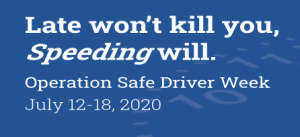We’ve been hard at work! Now, we are giving you a sneak peek at our August 2020 releases. We have put together a series of updated video content to ensure your drivers have the latest information.
Not only are we creating and releasing new content; we are also updating our existing content. Experience the new look and feel of our brand new, up-to-date, Hours of Service, and School Bus training videos.
Your Client Success Representative will gladly introduce this new content to you. Give us a call and we will assign it to your fleet immediately.
Trucking – Hours of Service Series
Introduction to Hours of Service
A quick intro discussing who must comply with the new HOS regulations.
Video Length: 2:38
The 14-Hour Window, 11-Hour Limit, 60- 70-Hour Limit
Detailed explanation about the three maximum duty limits under the house of service regulations for commercial motor vehicle operators.
Video Length: 3:28
The Thirty Minute Break and 34-Hour Restart
We take a close look at the hours of service regulations regarding the 30-minute break and 34-hour restart.
Video Length: 2:08
On-Duty Time, Travel Time, and Off-Duty Time
This session details the differences between on-duty, off-duty, and travel time according to FMCSA hours of service regulations.
Video Length – 3:36
The Sleeper Berth Provision
We focus on the nuances of using the sleeper berth to serve required hours off-duty while on the road.
Video Length – 5:05
The Driver’s Daily Logbook
Even if drivers utilize the updated ELD method of tracking hours of service, they should still know how to manually fill out a paper logbook. This video covers the details on:
- – What a logbook looks like
- – What information is required
- – How to record this information properly
- – How long to keep the logs and where
Video Length: 4:06
Interstate Truck Driver’s Guide to Hours of Service
The FMCSA provides this guidebook that covers specifics of the hours of service rules. Learn about:
- – Regulations
- – Who must comply
- – Time limits
- – On-duty vs. off-duty
- – Rule exemptions
- – How to record hours served
Length: 28 pages
Hours of Service ELD
This module teaches how ELDs work, who must use them, and why they are an improvement on how drivers track their hours.
Video Length: 4:25
Exemptions/Exceptions
Driving situations where hours of service may not apply or may function a little differently. This section discusses some hours of service exceptions and their corresponding rules.
Video Length: 2:57
Hours of Service Changes in 2020
Information regarding the recent changes made to the FMCSA hours of service regulations.
Video Length: 2:08
Schools
School Bus – Security
Learn Basic procedures for coping with security hazards on your school bus. These include:
- – Reacting to suspicious persons or devices
- – Suspected use of a weapon
- – Bomb threats
- – Hostage or hijacking situations
Video length: 7:55
Spanish Videos
Lane Restrictions: Restricciones de Carril
Aprenda cuándo y dónde el conducir en el carril izquierdo es aceptable para vehículos comerciales grandes.
Learn when and where driving in the left lane is acceptable for large commercial vehicles.
Video Length: 5:22
Future Clients:
Right now, we are offering complimentary access to our system for 30 days. No money down, no contract, no obligation.
Run us side-by-side with your current learning management system. Why not? It’s free for you! And we love a good challenge.
Infinit-I Workforce Solutions wants to give you 30 days. Because that’s all it takes to prove our value and earn your trust. Click here to sign up today!
Additional Resources:
It’s a Trap! Safe Driver Week – Speeding Blitz.
Gearing Up for Safe Driver Week; Preparing Drivers for Speeding Blitz
Out-perform, Out-shine, and Out-grow your Current Safety Culture
Why A Positive Dispatcher & Driver Relationship is Key
Why You Should Be Focused on Your Employee’s Cultural Relationships Now More Than Ever













































